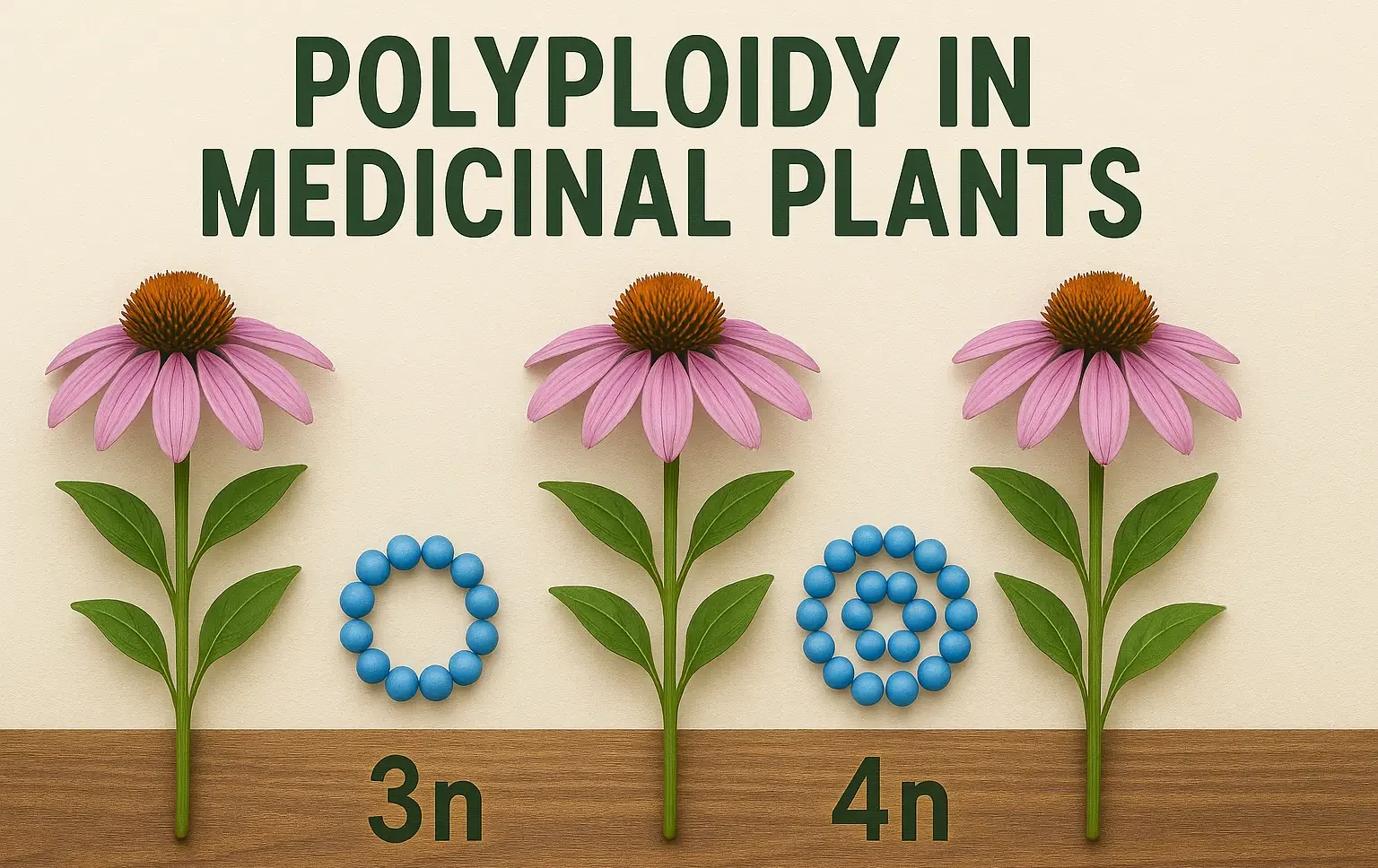- Polyploidy in Medicinal Plants increases chromosome sets, enhancing growth, yield, and active constituent content.
- Polyploidy in Medicinal Plants improves medicinal value, stress tolerance, and genetic diversity for better drug sources.
What is Polyploidy?
- Polyploidy is a genetic condition where a plant has more than two sets of chromosomes.
- While most plants are diploid (2n), polyploid plants can be triploid (3n), tetraploid (4n), or higher.
Types of Polyploidy
-
Autopolyploidy:
- Extra chromosome sets originate from the same species.
- Example: Atropa belladonna – Tetraploid varieties have higher alkaloid content.
-
Allopolyploidy:
- Results from hybridization between different species, followed by chromosome doubling.
- Example: Triticum aestivum (Wheat) – Used in medicinal applications.
Methods of Inducing Polyploidy
- Chemical Induction: Colchicine disrupts mitotic spindle fibers, causing chromosome doubling.
- Physical Methods: High temperature or radiation exposure.
Advertisements
Applications in Medicinal Plants
-
Increased Secondary Metabolite Production
-
Improved Growth & Biomass
- Papaver somniferum – Increased morphine and codeine production.
-
Enhanced Disease Resistance
- Panax ginseng – Greater pathogen resistance.
Advantages of Polyploidy in Medicinal Plants
- Higher bioactive compound content.
- Increased resistance to environmental stress.
- Larger plant organs, improving harvesting efficiency.
Disadvantages
- Some polyploids (e.g., triploids) are sterile.
- Slower growth in certain species.

